Affiliate disclosure: This post may contain affiliate links. Please see our Privacy Policy.
Astragalus (Astragalus membranaceus) is an easy-to-grow perennial that’s beautiful in the garden. As a medicinal herb, it’s a natural adaptogen and immune stimulant.
Beyond their medicinal value, astragalus plants are also grown as a vegetable, and their tasty roots are added to all manner of savory dishes.
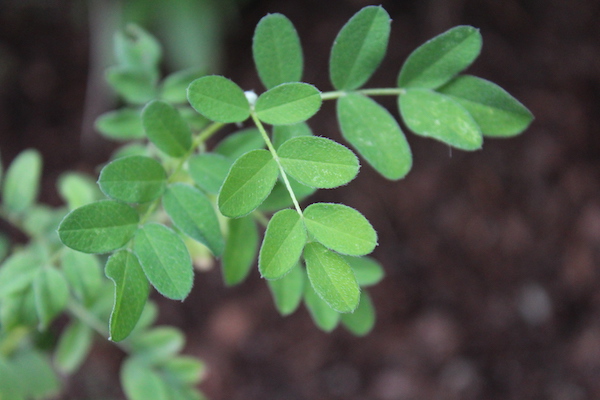
Astragalus is well-known in Chinese herbal medicine as an immune-strengthening tonic, and it’s gaining popularity in western herbalism as both an adaptogen and a natural immune tonic. Immune tonics are meant to be taken over a long period of time, rather than just at acute illness.
Incorporating Astragalus root into your diet helps balance your system and promote a healthy immune response.
On the other hand, immune-boosting herbs like echinacea are meant to be taken for a short period right at the onset of illness and continued for just a short time.
Astragalus plants are used both as a medicine and as a food, and astragalus roots are added to just about any slow-simmering meal for a nutrient boost. By incorporating it into your diet, you get the benefits of your food as medicine, and it’s a tasty root in any case.
Other examples of immune tonics include:
- ashwagandha
- calendula flowers
- chaga mushrooms
- elderberries
- lion’s mane mushrooms
- reishi mushrooms
- shiitake mushrooms
- turkey tail mushrooms
As with many plants used in Eastern medicine, I assumed they wouldn’t be hard here in Vermont, but then I spotted a potted plant start at a local nursery. The sign said they’re a vigorous perennial that’s hardy to zone 4, so I brought the little baby home.
When I got home, I read that Astragalus is only hardy to zone 6, and in colder location’s it’s grown as an annual. That fall, I tried to harvest all the roots, assuming it wouldn’t survive our winter anyway…but it came right back the following spring from some piece of root I missed.
I planted it 3 years ago, and my little astragalus plant has thrived with virtually no care ever since. It comes back each year, even after I harvest most of its medicinal roots.
(I’ve also since learned that at a local Vermont seed company called Earthbeat seeds grows and sells Astragalus seeds, so that’s a good source if you want to grow it yourself.)
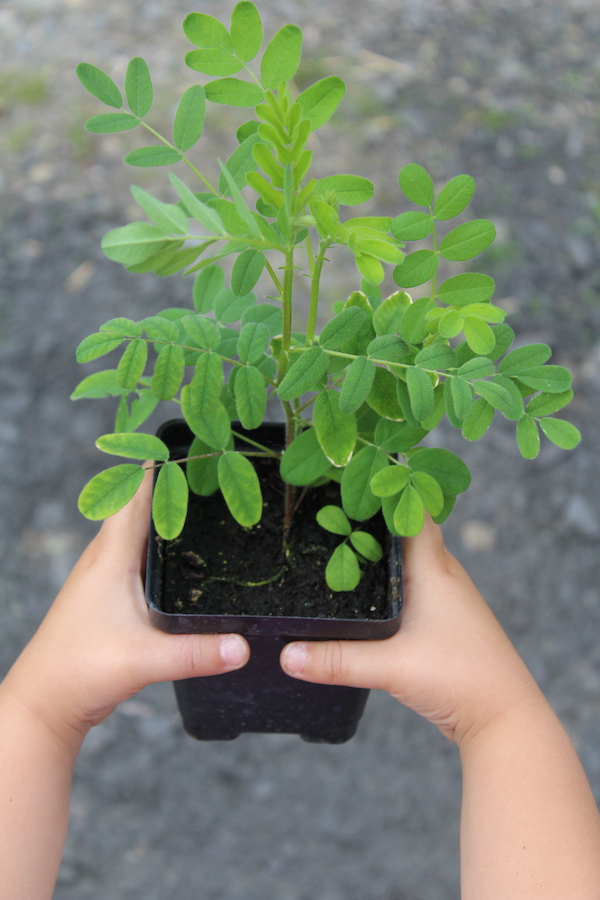
Astragalus is an herbaceous perennial plant that comes from the legume family. This plant has a short, vertical stem that is covered with leaves. As the plant grows, it is covered with yellowish flowers that look similar to peas and mature into oval or egg-shaped beans.
In herbalism, astragalus is a sweet, warming herb often referred to by its Chinese name, Huang Qi, which means “yellow leader.” When harvested, the roots are yellow and one of the most important Chinese medicinal herbs.
Growing astragalus in your garden is surprisingly easy once you get past starting the seeds. These seeds are a bit tricky, especially for new gardeners who have never used the process of cold stratification before.
Don’t let that scare you. Once germinated and planted into the ground, these plants grow for years without too much help from you.
How to Grow Astragalus
Growing astragalus in your garden is easy. If you live in USDA zones 6-11, this herb grows as a perennial. Though I’ve had success growing it as a perennial in zone 4, don’t count on that everywhere. In colder regions, it should be considered an annual.
You can also grow the plant in containers that come inside when frost and cold temperatures hit the region.
First, you have to prepare the right type of soil. This plant prefers sandy, well-drained soil. Standing water will quickly cause root rot and the death of your plant, so make sure the soil isn’t too thick or full of clay. Clay soil holds onto too much moisture.
We have intense clay soil, but I happened to plant it in a raised bed that’s filled with a mix of our soil, sand, and compost, which created a much lighter mix.
Astragalus is picky about the pH level of the plant. It prefers to grow in soil that has a pH range between 6.5-7. Make sure to amend the soil with compost or well-rotted manure for nutrients before planting.
Picking the right spot where you grow astragalus matters as well. This plant prefers partial shade or full sunlight. Since it’s not a fan of cold weather, planting it in full sunlight is best for those regions where the temperature might dip down a bit more than warmer climates.
Ours is planted in a raised bed right up against a grape arbor, and the grapes grow dense in the summer to provide partial shade.
Unless you happen to have a local nursery that’s well stocked with medicinal herbs, you’ll likely have trouble finding an astragalus plant in your local garden nursery. Most gardeners need to start the seeds at home indoors.
Astragalus seeds require a 21-day cold stratification period for proper germination and mild scarification with fine-grade sandpaper. That’s not all that hard, believe it or not, and many seeds require similar treatment to germinate (sea buckthorn berries are a good example).
Start the stratification in mid to late winter. Take a look at your last frost date in your region. You want to start these seeds eight weeks before this date, so you need to count 21 days back from this date. That’s when you need to start the cold stratification.
Astragalus seeds need to be started indoors in small pots. Germination takes place 3-10 days after sowing the seeds, but make sure you soak the seeds for at least one hour before planting to help soften the seeds and speed up the process.
Put the seeds into the pot and cover them with a thin layer (around ¼ of an inch) of soil. Make sure you water deeply to help germination.
After the plants are large and stable, it’s time to start the hardening off process, which is when you bring the plants outside each day for a week, gradually lengthening the time. This process is vital, and it helps the plants adjust to the world outside and all of the elements, like wind and sunlight.
(You should be doing this same hardening-off process with all your seedlings, especially tomatoes, so it’s nothing special if you’re already a backyard gardener.)
Once the last frost passes in spring, it’s time to transplant your seedlings outside to the area you selected beforehand. If you have multiple astragalus plants, each one must be spaced about 16 inches apart.
If you decide to grow your astragalus plants in containers, they need to be in light-colored pots to avoid fluctuating temperatures in black or dark-colored pots. Make sure the pot has plenty of space for the root ball of the plant.
Caring for Astragalus Plants
After you plant your astragalus plants, you have to know how to take care of them. These plants aren’t too picky about their requirements, but you should know what they need for optimal growth.
Since these plants prefer to grow in sandy, well-drained soil, watering regularly is important. If you grow your astragalus in containers, the root ball needs to stay moist, especially in the summer. Daily watering is often the best for these plants, but in some conditions, watering every other day works as well.
These plants don’t require too much fertilization, but spreading compost or well-rotted manure around the base of your plants provides it with a boost of nutrients. Natural fertilizers are typically all that this plant needs, but if you feel like your plant isn’t growing well, considering using a slow-release fertilizer and following the package’s instructions.
Gardeners also need to make sure they prune their astragalus plants as well. These perennials are fast growers in optimal conditions, and they’ll become invasive if you aren’t careful. Prune annually or whenever you notice that the plant is getting too large.
Harvesting Astragalus
Astragalus requires two years of growth before harvesting the rootstock for medicine making, but some prefer to wait until the root is three years old. This ensures that there’s plenty of rootstock left for the plant, as well as a good-sized harvest for you.
If you’re in a cold location and growing it as an annual, you can simply harvest smaller roots after the first year. Any roots missed may come back up the following year.
When the time comes, take a garden fork or needle-nose spade and remove the taproot from the ground.
If you want to keep the plant living and harvest some of the roots, don’t remove more than 30 percent of the small roots that surround the main taproot.
Once you remove the roots from the ground, clean and wash them with warm water, slice and dry them for use later. Feel free to remove the foliage and stems in the fall; this part of the plant has no medicinal value, so toss it in your compost.
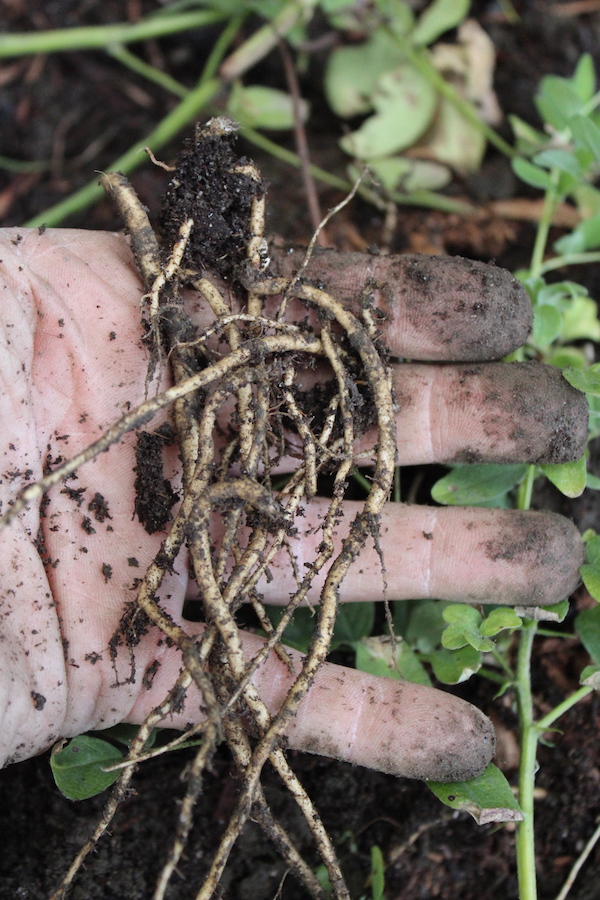
Astragalus Medicinal Benefits
Sometimes called Huang Qi or Bei Qi, astragalus has many different medicinal benefits that make it a popular choice in different cultures. Many herbalists consider this to be both an immunostimulant, which means it stimulates the immune system, and an immunomodulant, which means it encourages the immune system to be guarded against pathogens.
Some of the ailments that this herb treats include:
- Anorexia
- Blood sugar problems
- Diarrhea
- Fatigue
- Fibromyalgia
- Heart disease
- Hepatitis
- Upper respiratory infections
This herb is so potent that it’s included in the top 50 fundamental Chinese herbs. It has been used to treat dozens of ailments throughout the centuries and featured in hundreds of herbal remedies.
Astragalus is a powerful adaptogen, helping to return your body to a balanced state when you feel too stressed. At the same time, it’s known to support your immune system by increasing white blood cells’ activity. This also protects the heart and liver.
If you want to try to make some astragalus herbal remedies, give these a try.
- Astragalus Root Tincture
- Astragalus Tea Recipe
- The Ultimate Immune Boosting Herbal Tea Blend
- Garlic and Astragalus Syrup for the Flu Season
- The Best Adaptogen Chai Tea
- Elderberry and Astragalus Syrup
Astragalus Culinary Uses
Astragalus also has a long history of being used in different culinary dishes. While it’s not as popular in the United States, many Chinese recipes include astragalus roots or astragalus powder.
Here are some recipes to try after you grow astragalus for the first time.
- Astragalus and Blueberry Froyo
- Healing Instant Pot Herbal Chicken Soup
- Astragalus Miso Immunity Soup
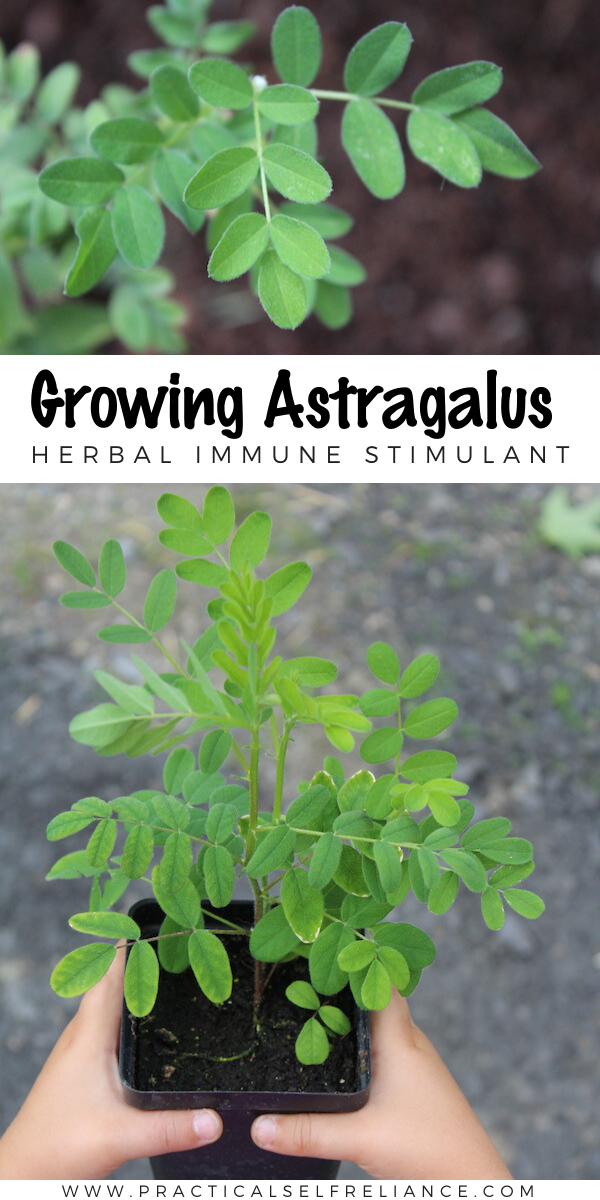
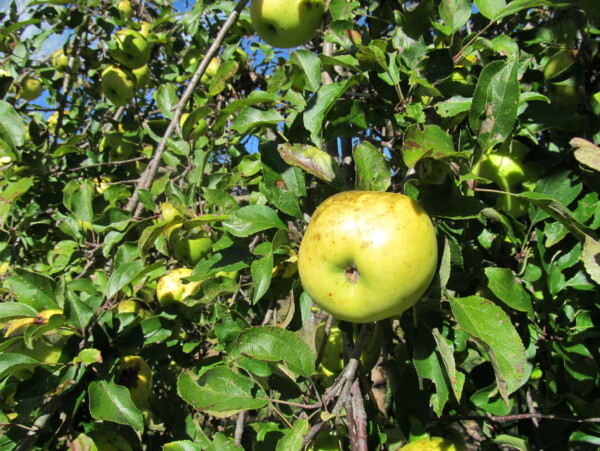



You are such an inspiration for me to try growing this in my zone 4. Maybe a sheltered spot will help it overwinter. Successfully grew ashwaganda last year and will continue to do so. Thanks for the encouragement.
https://www.nature.com/articles/s41598-021-97109-6
Leaves are great, not useless “waste”.
This may be quite similar to sweet potato leaves, which were once considered as waste or food for raising pigs. The nutrition value of the leaves is at least compatible with (if not higher than) the roots.
Thanks so much for sharing.
Can the root be eaten raw, as in a salad? How do they taste? What is the recommended amount per day? Any negative side effects to be avoided?
I don’t believe that I have ever heard of anyone eating it raw. The general recommendation is 10 to 30 grams per day.
Hello!
Thank you for your thoughtful article on huang qi.
I just ordered seeds from Strictly Medicinals and I was wondering how high or how large these get. You wrote they need to be planted 16″ apart so I’m guessing not that large? I’m in Zone 5, with mostly full sun and clay soil that I will amend, so knowing the size will help planning to grow in-ground or in containers.
It should grow to about 4 feet tall.
Thank you for this information. Besides growing vegetables and foraging for wild food and medicine. I now want to start growing the most important herbs myself and this information will be a lot of help. Cheers
You’re very welcome. I’m so glad that you enjoyed the post.
I started my own seeds minus scarification and CMS. I did not do anything you said to do. I NEVER harden off seeds, haven’t in 40 yrs and won’t start now. Mine are in crappy soil, I NEVER test The PH level either. So thought I’d say there are other ways than what you have said you do. Mine were started 3 yrs ago, and bloomed for the first time this yr. I have never harvested any roots.
Thanks for sharing that. I am glad that you have had such great success. Unfortunately that isn’t always the case. The methods I have described here are just best practices to help others have a better chance of having a successful harvest.
I was surprised when I put the non-stratified seeds in clay soil and they popped up within a few days. Since these were older seeds, maybe there is a dormant period which is broken by either cold stratification or time.
I’m not sure but I’m glad it worked for you. It’s amazing how resilient seeds can sometimes be.
Is something missing???
“(Other examples of immune tonics include
?
As with many plants used in Eastern medicine, I assumed they ….
Oops! Thanks for the heads up. That part got deleted somehow before I hit publish, but I’ve fixed it now.
Loved this article, thank you for writing it! I received astragalus seeds from strictly medicinal seeds and have been pondering how to start them. Since I’m planning on moving in the next two years, I’ll be plot panting these babies with your tips. Much love!